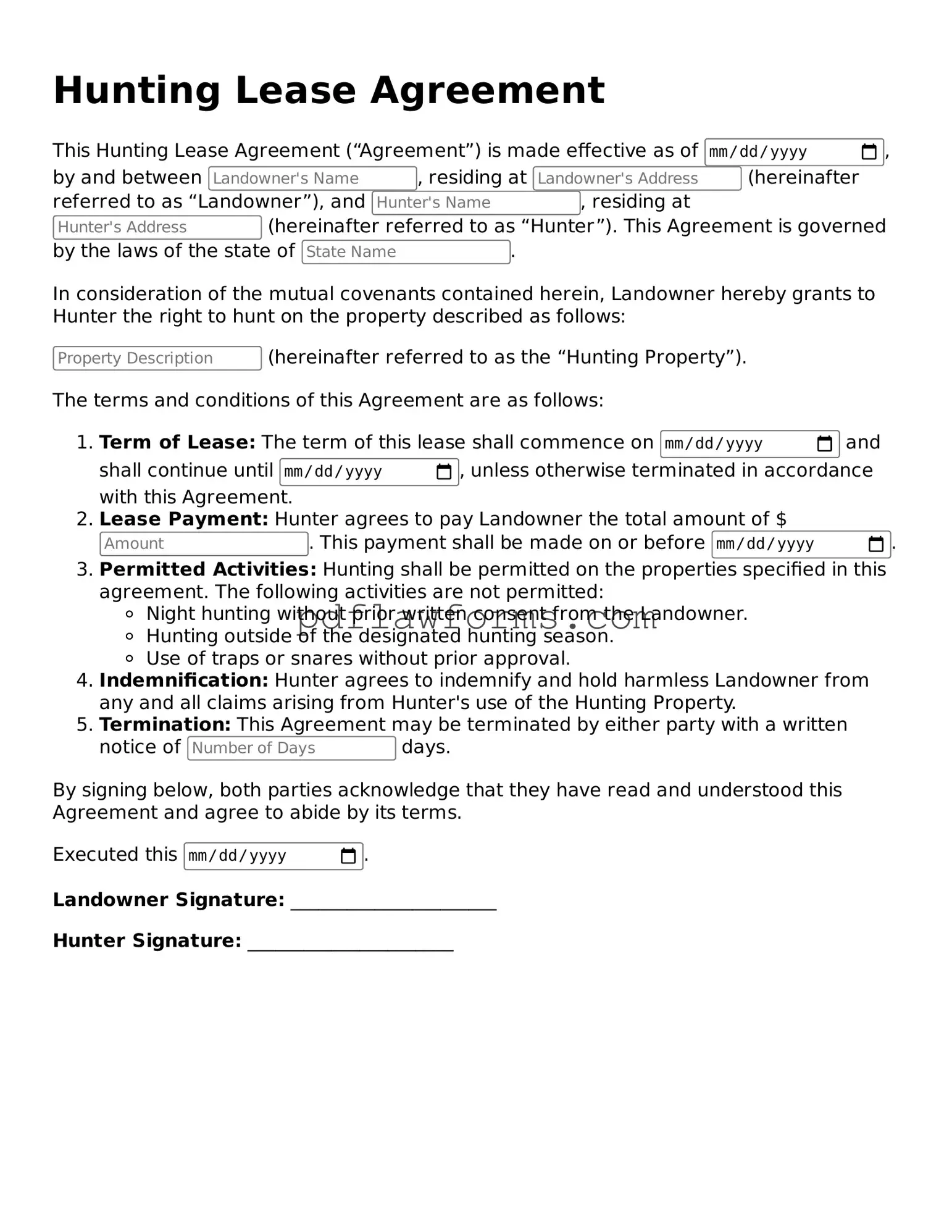Filling out a Hunting Lease Agreement form can be a straightforward process, but there are common mistakes that can lead to misunderstandings or disputes. One significant error is failing to provide complete contact information. Landowners and hunters should ensure that all names, addresses, and phone numbers are accurate and up to date. Incomplete contact details can hinder communication and create complications if issues arise.
Another frequent mistake involves neglecting to specify the hunting rights granted. It is essential to clearly outline what activities are permitted on the leased land. This includes details on the types of game that can be hunted, any restrictions on hunting methods, and whether other activities, such as camping or fishing, are allowed. Without this clarity, misunderstandings can easily occur.
Many individuals also overlook the importance of including the lease duration. Specifying the start and end dates of the lease is crucial. This information helps both parties understand the timeframe of the agreement and prevents any assumptions about renewal or termination.
Inadequate payment terms can create confusion as well. It is vital to state the total lease amount, payment schedule, and acceptable payment methods. Both parties should agree on whether payments are due upfront or in installments. Clear payment terms help avoid disputes related to financial obligations.
Another common error is failing to discuss liability and insurance. Landowners and hunters should address who is responsible for any accidents or damages that may occur during the lease period. Including a clause about insurance coverage can provide peace of mind for both parties.
Some individuals may also forget to include provisions for property maintenance. It is important to specify who is responsible for maintaining the land and any structures on it. This can include tasks such as clearing trails or managing wildlife populations. Clear maintenance responsibilities can prevent conflicts and ensure the land remains in good condition.
Finally, many people do not seek legal advice before finalizing the agreement. Consulting with a legal professional can help identify potential issues and ensure that the lease complies with local laws. Taking this step can protect both parties and contribute to a smoother leasing experience.
